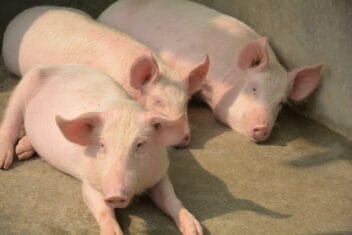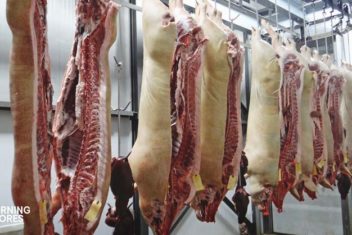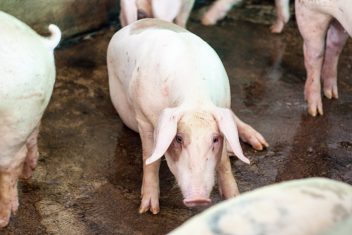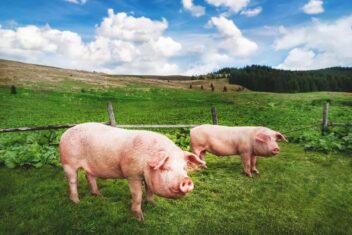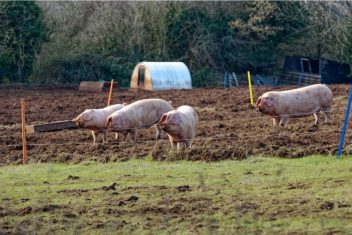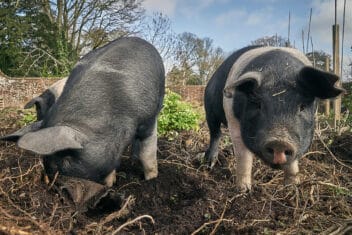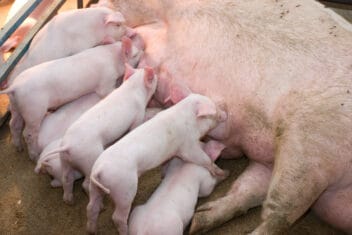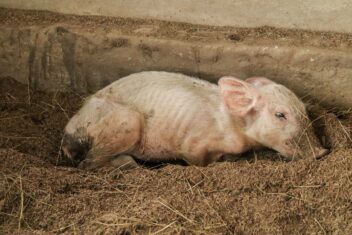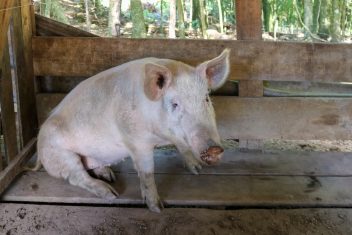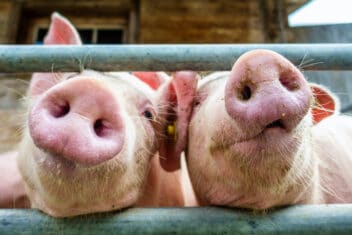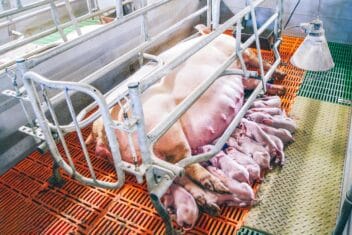96° – that’s the forecasted high today for my town. Phew! That’s about 30° too warm for my liking. I don’t think the pigs are any different. In fact, almost immediately after the sun came up this morning, the pigs hightailed it to the back of their pen where they could find some shade.
Luckily, where I live, it rarely gets over 90°, even during the hottest days of summer. My pigs are lucky, too, because they are raised on forested pasture and have nearly a full acre to find mud, shade, and water.
However, that’s certainly not the case for everybody who raises pigs. As much as you might dislike the heat, pigs dislike it even more. Unlike people, pigs don’t have sweat glands so they can’t sweat to cool down.
Therefore, it’s essential that you take the proper steps to help keep your pigs cool in the heat.
Can Pigs Overheat?
Yes. Pigs overheat very easily. This is due in part to the fact that they cannot sweat.
Pigs have short noses and dished faces that reduce airflow, which also means they can’t cool themselves as well through their breathing (something other animals rely on in hot weather).
Fat pigs are also disadvantaged because the layer of fat beneath the skin makes it challenging for them to lose heat, too. The larger a pig is, the more likely it is to overheat.
How to Keep Pigs Cool in the Heat
1. Access to Fresh Water
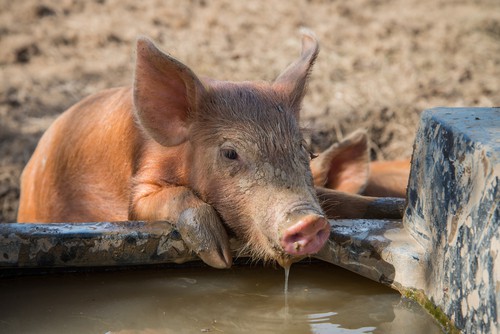
Providing your pigs with access to fresh water is the singular best thing you can do to keep them cool. Just like you, pigs can easily become dehydrated in hot weather.
The hotter it gets, the more important it becomes for you to give your pigs plenty of fresh, cool water
You’ll want to keep a few things in mind when offering water, too.
First, the best way to water your pigs is with an automatic watering system. That way, you won’t have to worry about them running out in the middle of the day. You might lose water to evaporation – or worse, your pigs might spill the water as they attempt to make a wallow.
I recommend using an automatic watering system that is plumbed so the drinkers (we use nipple waterers) can be attached to a barrel. The barrel needs to sit outside the pen so that your pigs can’t tip it over.
You should ideally have multiple waterers if you have numerous pigs. If you have 30 pigs and one waterer or nipple, you can be almost guaranteed that your pigs are going to fight over it. Test your waterer on a regular basis to make sure everything is working.
2. Spots to Wallow
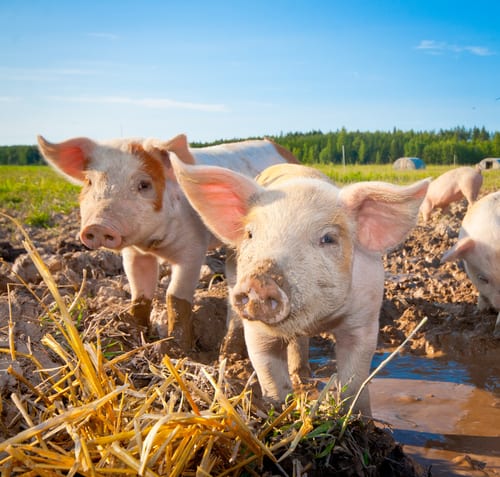
Pigs can’t sweat, so they need wallows, or mud holes, to cool off. If it’s been quite a while without a big rainstorm, you will need to make an artificial wallow. Run a hose into your pasture – if you can, keep the water flowing. The chilled water will make the pen muddy and the pigs will love splashing around in the puddles.
Mud is beneficial because it’s cooler than the air. Plus, when it dries on your pigs’ skin, it creates a protective barrier that acts as a sunscreen against the sun.
Some people go so far as to set up sprinklers or misters in their pig pens. You can do this, but be mindful of setting up the sprinkler where the pigs can’t dig it up. If all else fails, consider going out a few times a day and splashing your pigs with water.
3. Automatic Feeders
Automatic feeders are essential for raising pigs at all times throughout the year, but especially in the summer. When your pigs are hot, they aren’t going to want to eat as much.
If you feed them once or even twice a day, there’s a good chance that you’re going to time your feedings with a time when they aren’t that hungry.
As a result, they might leave food hanging out in their bowls, which can attract rodents and flies. Instead, use an automatic feeder that’s secured against pests and the elements. The pigs can help themselves when they’re feeling peckish.
4. Frozen Treats
Consider tossing a few frozen treats into your pig pen to cool your hogs down. I’ve thrown my pigs popsicles before, as well as frozen berries and even ice cubes mixed into their bucket of treats. It won’t make a huge difference in the heat, but every little bit helps!
5. Shade
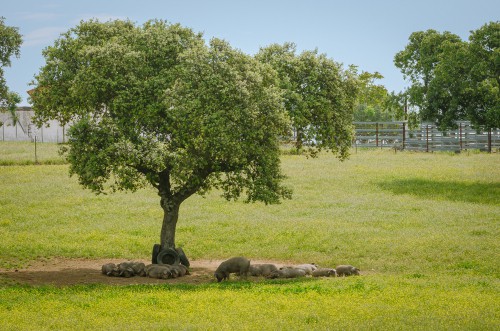
Make sure your pig pen or pasture has plenty of areas where your pigs can seek refuge from the sun. This will help prevent them from overheating. If you don’t have enough shade, your pigs can get sunburn.
You can build your pigs a barn or lean-to that provides shelter from the sun. However, if you have wooded space, nine times out of ten, that’s going to be a cooler option for your pigs (and it’s where they will head when the mercury rises).
6. Appropriate Housing

Appropriate housing is essential at all times when you raise your own pigs, but it’s especially important in the summer months. You need to make sure your pig pen has plenty of ventilation (no stuffy barns, please) and enough space for all of your pigs to move around comfortably.
If you are raising pigs primarily on pasture, you don’t need a lot of room in the barn – just enough space for them to sleep at night. However, if you raise your pigs in a barn full-time, plenty of space is essential.
Plan to allocate a minimum of 8-square-feet per pig – that’s a bare minimum. The more, the better. Give outside access whenever possible, too.
7. Use Fans with Caution
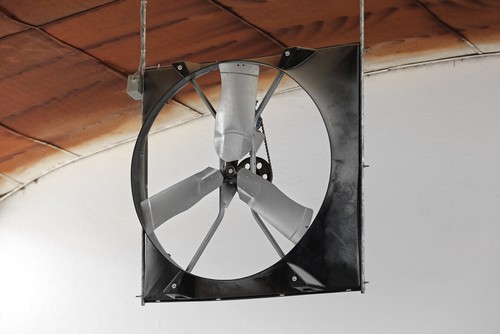
Some people recommend installing fans to help their pigs stay cool. Personally, I would not do this. Pigs produce a lot of dust and dirt, and you will need to install a fan specifically designed for use in a barn to prevent it from overheating and causing a fire.
Fans are really only necessary if you are raising pigs full-time inside a barn. If they are able to go outside, you probably don’t need a fan. However, a barn can get quite stuffy as it won’t have any natural breezes. The air movement from the fan can cool things down and reduce humidity inside the barn.
8. Adjust Their Diets
You can more or less feed your pigs the same as what you would during cool weather, but during hot weather, it’s important to keep in mind that your pigs will eat much less (especially if they are dehydrated).
Rather than feeding fibrous foods, like lots of vegetables and leafy greens, you are better off supplementing with foods that are higher in protein, fat, and vitamins. You’ll get more bang for your buck, as the pigs will get more nutrients out of these foods. Plus, digesting fiber releases more heat, which can make your pigs even hotter in the summer.
The exception is if you can add cooling fruits and vegetables to their diet. Good options are those that are filled with water, like cucumbers and melons.
9. Choose the Right Breeds
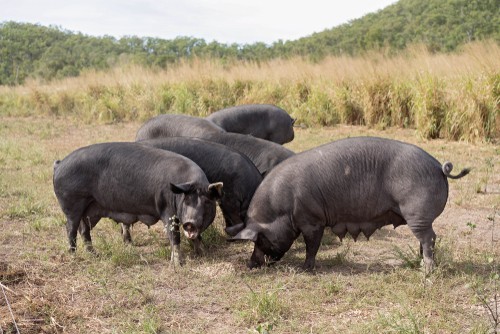
If you’re raising pigs in a hot climate, you’re going to want to choose pigs that are naturally more heat-tolerant.
Light-colored pigs, like Yorkshire and Large White pigs, aren’t going to be as resilient when it comes to hot weather and the sun. Pigs with darker skin and hair will withstand high temperatures better.
As a generalization, heritage breed pigs tend to do better with hot temperatures, too, since more modern, industrialized breeds have become accustomed to life inside a barn.
Watch for Signs of Heat Exhaustion
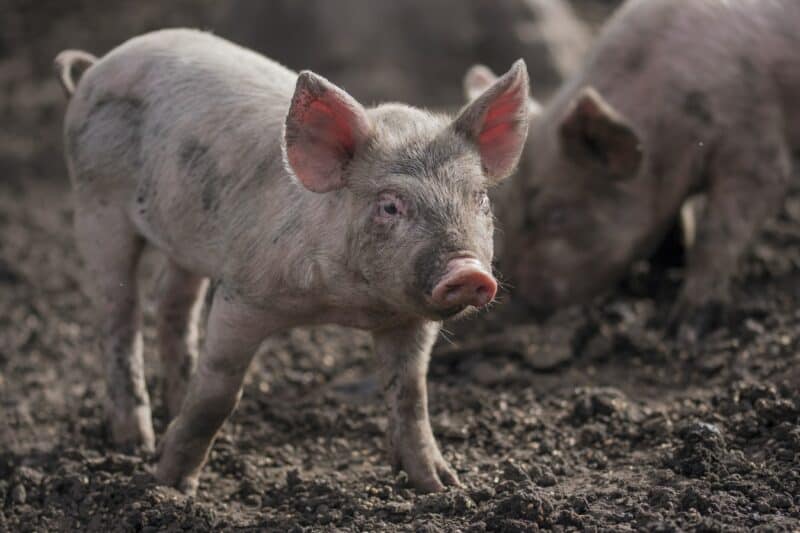
A bit of mud could be all your pigs need to stay cool and refreshed!
No matter what, it’s essential that you monitor your pigs for signs of heat exhaustion. It doesn’t matter how hot it is, because there are other conditions that can impact a pig’s tendency toward heat sickness, too.
For example, we decided to raise pink-colored (instead of red-colored) pigs for the first time this year. Because we were used to raising dark-colored animals, we didn’t think anything of it the first day the temperature reached 70°. Unfortunately, a couple of those little light-skinned piglets got horrible sunburns that day.
Sunburn is just one potential risk of hot weather to watch out for. You will also want to carefully monitor your pigs for signs of heat stress, such as excess water intake, loss of appetite, panting, lethargy, and muscle tremors.
Left unchecked, heat stress can kill your pigs. At the very least, it can make them grow slowly. Plus, there’s no reason for your pigs to be just as miserable as you are in this heat! Do what you can to help cool them down. Summer only lasts so long, so do your best to keep everyone healthy.

